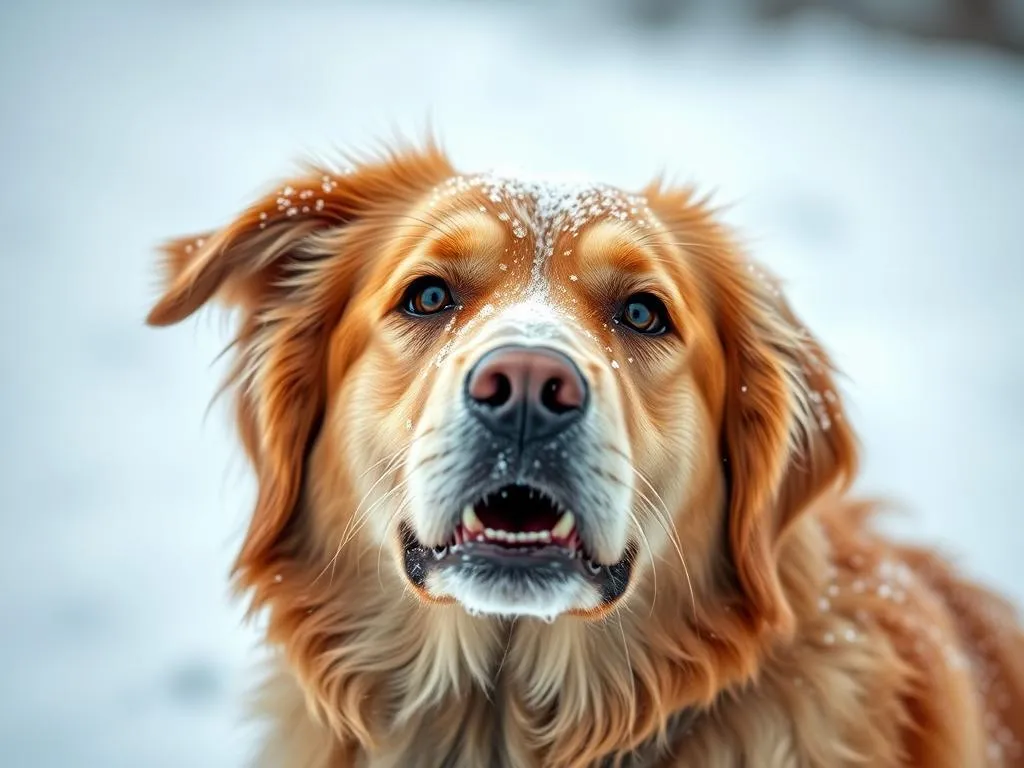
Understanding the health of our beloved pets is crucial for their well-being. Dog owners often find themselves faced with numerous questions about potential health issues, ranging from nutrition to behavioral concerns. One intriguing topic that has emerged in recent discussions is whether dogs can experience something akin to brain freeze, a phenomenon commonly associated with humans. This article will delve into the concept of brain freeze in dogs, exploring its symptoms, causes, prevention, and treatment options.
Understanding Brain Freeze
Definition of Brain Freeze
Brain freeze, scientifically known as sphenopalatine ganglioneuralgia, occurs when a rapid change in temperature affects the palate, leading to a sudden headache. While this term is frequently used in relation to humans consuming cold foods or beverages too quickly, its application to dogs remains a topic of curiosity. The question arises: can dogs experience this uncomfortable sensation?
How Brain Freeze Happens
Brain freeze occurs due to an immediate response of the nerves in the mouth and throat to cold stimuli. When something cold touches the roof of the mouth, it causes blood vessels to constrict and then rapidly dilate, triggering pain receptors that communicate with the brain. The physiological mechanism is similar in dogs, although their reaction and tolerance may vary significantly due to differences in anatomy and behavior.
Can Dogs Get Brain Freeze?
Evidence and Research
Current research specifically addressing whether dogs can get brain freeze is limited. However, anecdotal evidence from dog owners and veterinarians suggests that dogs can indeed experience discomfort resembling brain freeze. Observations indicate that when dogs consume cold treats or ice, some display signs of hesitation or discomfort, which could align with this phenomenon.
Anatomical Differences Between Dogs and Humans
Dogs possess different brain structures and nerve pathways compared to humans. While the basic mechanism of nerve response to cold stimuli may be similar, the likelihood and intensity of experiencing brain freeze might differ. For instance, the canine palate is shaped differently, potentially influencing the sensation experienced when consuming cold items. Thus, while dogs may not experience brain freeze in the same way humans do, they can still feel discomfort from rapid temperature changes.
Symptoms of Brain Freeze in Dogs
Common Symptoms to Watch For
If you suspect your dog might be experiencing brain freeze, there are several signs to look out for:
- Sudden cessation of eating or drinking: If your dog suddenly stops consuming a cold treat, it may be feeling discomfort.
- Signs of discomfort or confusion: This includes pacing, licking the lips, or looking around in confusion.
- Possible vocalizations: Whining or barking may indicate that your dog is uncomfortable.
Distinguishing Between Brain Freeze and Other Issues
It’s essential to differentiate between brain freeze and other potential health concerns. For instance:
- Dental pain: If your dog is exhibiting signs of distress primarily related to their mouth, it could be dental-related rather than temperature-related.
- Gastrointestinal issues: Symptoms like vomiting or diarrhea occurring alongside discomfort may indicate gastrointestinal problems rather than brain freeze.
Causes of Brain Freeze in Dogs
Temperature Sensitivity
Dogs can be sensitive to rapid temperature changes, making them susceptible to discomfort when consuming cold treats. Typical scenarios include:
- Eating ice cubes or frozen treats quickly
- Drinking cold water on a hot day
Understanding these triggers can help prevent uncomfortable experiences for your pet.
Behavioral Factors
A dog’s eating habits can contribute significantly to the likelihood of experiencing brain freeze. Dogs that tend to eat or drink quickly may be more prone to this sensation. Encouraging slower eating through puzzle feeders or by offering smaller portions can help mitigate the risk.
Prevention of Brain Freeze in Dogs
Safe Treat Practices
To prevent brain freeze, consider these tips when offering cold treats to your dog:
- Serve cold treats in moderation: Avoid giving your dog large quantities of cold items at once.
- Recommended waiting times: Allow a waiting period of 10-15 minutes between cold treats to give your dog’s palate time to adjust.
Gradual Introduction to Cold Foods
Introduce cold foods gradually to help your dog acclimate to lower temperatures. Starting with mildly cool treats and slowly progressing to colder items can help minimize discomfort.
Treatment for Dogs Experiencing Brain Freeze
Immediate Actions to Take
If your dog shows symptoms of brain freeze, here are immediate actions you can take:
- Remove the cold treat: Take away whatever cold item your dog was consuming.
- Calm and comfort your dog: Provide a warm environment and soothing words to help your dog relax.
When to Seek Veterinary Care
While brain freeze is generally not a serious concern, there are instances where veterinary care may be necessary. Seek professional help if you notice:
- Persistent discomfort or symptoms lasting longer than a few minutes
- Signs of severe distress or unusual behavior
- Accompanying symptoms such as vomiting or diarrhea
Additional Health Considerations for Dogs
General Dog Health Care Tips
Regular health care is vital for maintaining your dog’s overall well-being. Key tips include:
- Regular vet check-ups: Routine examinations can help detect health issues before they become serious.
- Nutritional advice: Providing a balanced diet tailored to your dog’s age, size, and health needs is essential for their health.
Recognizing Other Health Issues
Being vigilant about your dog’s health can help you detect other common issues:
- Behavioral changes: Sudden shifts in behavior can indicate underlying health problems.
- Routine monitoring: Keep an eye on your dog’s eating habits, energy levels, and overall demeanor.
Conclusion
In summary, while dogs may not experience brain freeze in the same way humans do, they can certainly feel discomfort from rapid temperature changes. Understanding the symptoms, causes, and preventive measures ensures that you can keep your furry friend happy and healthy. Regular veterinary visits and being attentive to your dog’s behavior are crucial components of responsible dog ownership. When in doubt, consulting with a veterinarian can provide peace of mind and ensure the best care for your beloved pet.









